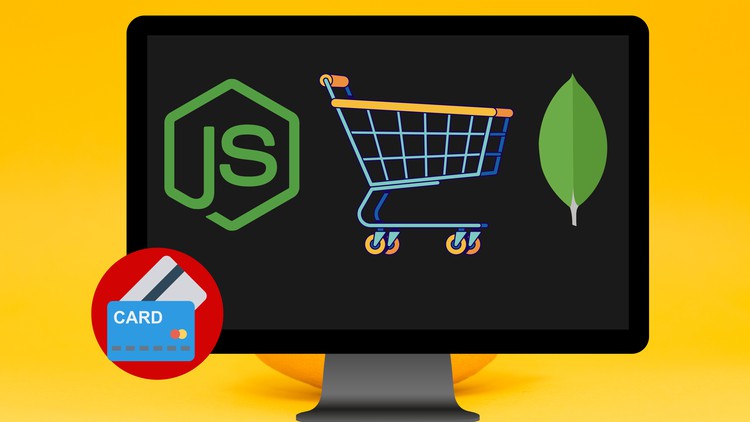MERN Stack E-commerce Project: Part 1: Backend Only
- Description
- Curriculum
- FAQ
- Reviews
This course is designed to provide students with a comprehensive understanding of building and deploying a full-featured API. Throughout the course, students will learn about integrating Stripe for payment processing, pagination and filtering techniques, order statistics and analysis, admin process for managing orders, implementing categories and product management, order management system, building and connecting to the database, implementing user authentication and authorization.
The course begins with an introduction to NodeJS and the basics of building an API. Students will learn how to set up a development environment, create and test API endpoints, and connect to a database. As the course progresses, students will learn about integrating Stripe for payment processing, handling webhooks, pagination and filtering techniques and order statistics and analysis.
Students will also learn about the admin process for managing orders, implementing categories and product management, and order management system. Throughout the course, students will work on real-world projects, giving them hands-on experience and a solid foundation for building and maintaining APIs.
The course also covers best practices for building APIs, including security, performance, and scalability. By the end of the course, students will have a strong understanding of building, testing and deploying APIs, and the skills to take on their next project.
This course is suitable for developers who want to learn about building and deploying APIs, students who are new to web development and want to learn about building and deploying APIs, developers who want to learn about integrating Stripe for payment processing, engineers who are interested in learning about building e-commerce systems, and individuals who want to learn about building and deploying a full-featured API.
Our experienced instructors will be available to provide guidance and support throughout the course. We encourage active participation in class discussions, asking questions and sharing knowledge with fellow students. This course is designed to provide a solid foundation for building APIs and is suitable for anyone who wants to learn more about back-end web development.
-
14User Data ModelVideo lesson
-
15Connect To MongoDB DatabaseVideo lesson
-
16MongoDB Connection String and Environment VariablesVideo lesson
-
17MongoDB in VSCODEVideo lesson
-
18User Registration Controller SetupVideo lesson
-
19User Registration ControllerVideo lesson
-
20Hash User PasswordVideo lesson
-
21User Login ControllerVideo lesson
-
22Error HandlingVideo lesson
-
23Not Found Route HandlerVideo lesson
-
24How Authentication WorksVideo lesson
-
25Mongoose Warning FixedVideo lesson
-
31Product Data ModelVideo lesson
-
32Create Product ControllerVideo lesson
-
33Fetching All ProductsVideo lesson
-
34Environments In PostmanVideo lesson
-
35Filter Products By NameVideo lesson
-
36Filter Products By Colors , Brands And SizesVideo lesson
-
37Filter Products By Price RangeVideo lesson
-
38Product PaginationVideo lesson
-
39Pagination ResultsVideo lesson
-
40Fetching Single ProductVideo lesson
-
41Update ProductVideo lesson
-
42Delete ProductVideo lesson
-
43Create CategoriesVideo lesson
-
44Single, Update, Delete Categories ControllerVideo lesson
-
45Associate Product To CategoryVideo lesson
-
46Products Brands CRUD ControllerVideo lesson
-
47Associate Products To Brand CategoryVideo lesson
-
48Products Colors CRUD Categories ControllerVideo lesson
-
49Color Model ModifiedVideo lesson
-
65WebHook ExplainedVideo lesson
-
66Stripe WebHook IntegrationVideo lesson
-
67WebHook Error FixedVideo lesson
-
68Update Order With Stripe WebHookVideo lesson
-
69Update Order with Stripe WebHook Error FixedVideo lesson
-
70Fetch All OrdersVideo lesson
-
71Fetch Single OrderVideo lesson
-
72Admin Processing OrderVideo lesson
-
73Populate User OrdersVideo lesson
-
74Testing Placement Of OrderVideo lesson

External Links May Contain Affiliate Links read more





